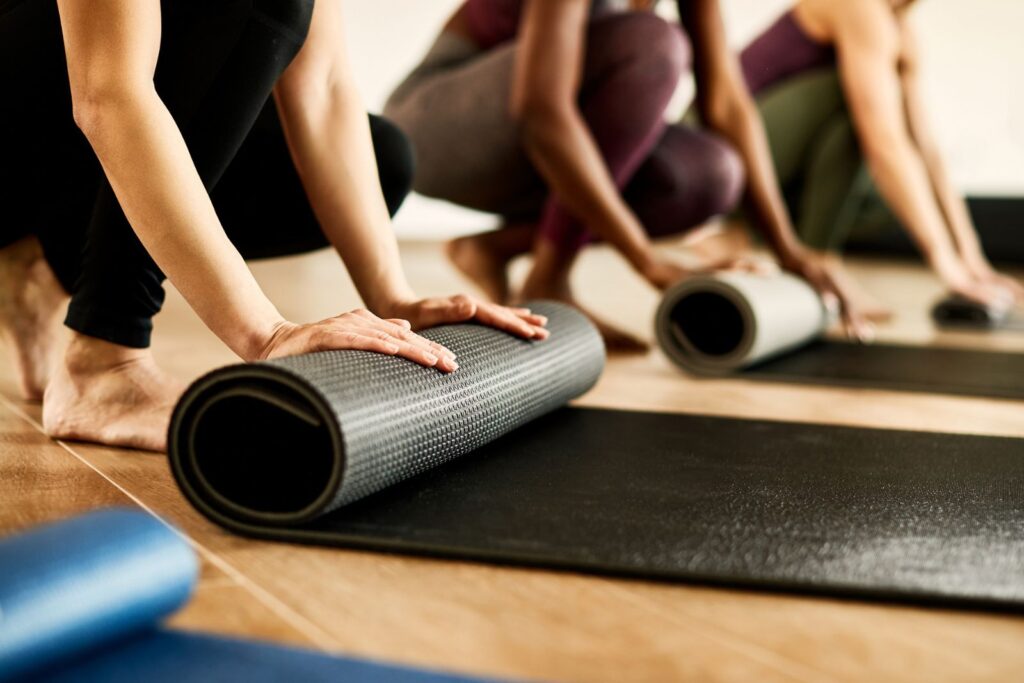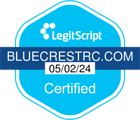Exercise has become a valuable component in the treatment of individuals undergoing addiction recovery. A clinical study published by the National Institutes of Health demonstrated that exercise activates reward pathways and neurochemicals in the brain, similar to the effects produced by addictive substances.
Even a daily routine of walking is enough to help people going through substance abuse. Each form of exercise targets a certain mental health issue, giving the patient other types of substance abuse treatments aside from the usual counseling or group meetings. This article will help you understand how physical activity for sobriety can become a powerful tool for a successful addiction recovery.
How Does Exercise Help Recovery?
Exercising supports the physical and mental aspects of healing during an addiction recovery treatment. For those who have doubts about this method, here are several exercise benefits in addiction recovery:
- Reduces Stress and Anxiety. Physical activity triggers the release of neurotransmitters like endorphins. These feel-good chemicals reduce anxiety and stress levels, which are common triggers for substance use disorders.
- Improves Mood and Mental Health. Regular exercise enhances mental well-being by increasing dopamine and serotonin production, neurotransmitters that are often depleted by substance abuse. The boost in brain chemistry helps alleviate symptoms of depression and some forms of mental health disorders.
- Promotes Better Sleep. Physical exercise can improve sleep quality by regulating the body’s internal clock and reducing insomnia symptoms. Quality sleep is needed to improve brain function and emotional health and even reduce the risks of chronic diseases like obesity and diabetes.
- Builds Structure and Routine. Exercise promotes discipline and creates a healthy routine, which is essential for individuals in recovery and rebuilding their lives. Structure helps replace the chaotic and unpredictable lifestyle associated with addiction.
- Increases Self-Esteem and Confidence. Achieving fitness goals or exercising regularly can boost self-esteem and confidence. Once individuals see improvements in their physical health and abilities, they feel more empowered and positive about their recovery journey.
- Enhances Social Connections. Group fitness classes or team sports provide opportunities to connect with others in a sober environment. These social interactions can offer support and a sense of community, eliminating feelings of isolation.
- Aids in Managing Cravings. Regular physical activity can diminish cravings and withdrawal symptoms by occupying the mind and serving as a distraction. The effects of exercise also satisfy the need for a natural “high,” lessening the desire for substance use.
- Improves Physical Health. Overcoming addiction involves healing the body from the physical damage caused by addictive substances. Exercise improves cardiovascular health, strengthens muscles, and boosts physical well-being, making recovery more sustainable.
Different Types of Exercises for Specific Addictions
Aerobic Exercises
Aerobic exercises release endorphins, which are natural mood enhancers that reduce stress and anxiety levels. Some examples of aerobic exercises are:
- Running. Running is an effective aerobic exercise that improves cardiovascular health and boosts mood by releasing endorphins. It can be tailored to various fitness levels, from jogging to sprinting. It also offers a meditative experience as it lets individuals clear their minds and focus on the rhythm of their breath.
- Cycling. Whether on a stationary bike indoors or cycling outdoors, this activity offers a low-impact option that strengthens heart health while being gentle on the joints. Cycling can also be a social activity if done with a group, providing added emotional support and camaraderie during recovery.
- Swimming. Swimming offers a full-body workout that is easy on the joints, making it suitable for those with physical limitations. The buoyancy of the water supports the body, reducing the risk of injury, while the rhythmic nature of swimming can be calming, reducing anxiety and enhancing emotional well-being.
- Brisk Walking. Walking is a simple yet effective aerobic exercise that can be easily incorporated into daily routines. It requires no special equipment and can be done anywhere, enabling individuals to practice mindfulness.
- Dance. Participating in dance classes or simply dancing at home is a fun and engaging way to boost heart rate and improve mood. Dance combines physical movement with music, offering an emotional outlet that relieves stress and promotes joy and self-expression.
Individuals recovering from stimulant addiction may benefit from this exercise-based intervention. Stimulant use can cause cardiovascular issues, and aerobic exercises can prevent heart diseases and improve stamina. They also help manage the restlessness and hyperactivity associated with stimulant withdrawal, providing a productive outlet for excess energy.
Strength Training
Doing resistance exercises can have a multitude of benefits for those in recovery. Strength training builds muscle, increases physical strength, and instills a sense of discipline and achievement. Examples of weight training exercises include:
- Bodyweight Squats. Squats are a foundational bodyweight exercise that targets the lower body, including the thighs, hips, and glutes. They are an excellent starting point for building strength and can be modified in intensity by adjusting the depth or adding weights.
- Push-Ups. Push-ups are an effective upper-body exercise that engages the chest, shoulders, and triceps while strengthening the core. They can be easily modified to suit different fitness levels, from wall push-ups to traditional or decline push-ups.
- Planks. Plank exercises are a versatile and efficient way to strengthen the core muscles, including the abdominals, back, and shoulders. Holding a plank position builds endurance and stability, which are important for overall physical balance and posture. The mental focus required to maintain a plank can also improve concentration and discipline.
- Dumbbell Rows. Dumbbell rows target the upper back and arm muscles, improving posture and upper body strength. This exercise can be done with varying weights to match the individual’s fitness level.
- Resistance Band Leg Press. Using resistance bands for leg presses is a low-impact way to strengthen the quadriceps, hamstrings, and calves. This exercise can be done at home or the gym and offers an alternative to traditional weight-based leg presses. The adaptability of resistance bands also makes it easy to adjust the intensity.
Those recovering from opioid addiction may find weight training beneficial. Opioid addiction often leads to muscle weakness and diminished physical health. This exercise for recovering addicts helps rebuild muscle strength, improve bone density, and enhance physical resilience. The discipline and routine needed in strength training can also aid in restoring a sense of structure and purpose.
Yoga
Yoga offers a blend of physical movement, mindfulness, and meditation, making it beneficial for addiction recovery. By focusing on breath control and body awareness, yoga develops mindfulness skills, allowing individuals to better manage cravings and emotional triggers for substance use. Here are several poses that may aid in addiction recovery:
- Child’s Pose (Balasana). Child’s Pose is a gentle, restorative pose that promotes relaxation and stress reduction. By folding the body forward and resting the forehead on the mat, this pose encourages deep breathing and introspection, helping to calm the mind and release tension.
- Mountain Pose (Tadasana). Mountain Pose is a foundational standing posture that emphasizes grounding and centering. Focusing on alignment and breathing encourages individuals to be present in the moment, enhancing body awareness and mindfulness.
- Warrior II (Virabhadrasana II). Warrior II is a powerful pose that builds strength and stamina in the legs and core while encouraging focus and determination. It symbolizes courage and resilience, qualities that are important in the recovery journey.
- Tree Pose (Vrksasana). Tree Pose is a balance-focused posture that improves concentration, stability, and mindfulness. By requiring individuals to maintain focus while balancing on one leg, mental discipline and physical coordination are enhanced.
- Corpse Pose (Savasana). Often used as a final relaxation pose in yoga practice, Corpse Pose is an essential tool for complete physical and mental relaxation. By lying still and focusing on the breath, individuals can let go of stress and anxiety, entering a meditative state that encourages healing and serenity.
This form of exercise may be ideal for people recovering from alcohol addiction. It helps reduce anxiety, improve brain function, and increase mindfulness, all of which are crucial for managing triggers associated with alcohol use disorder. The calming effects of yoga can also alleviate symptoms of alcohol withdrawal, such as agitation and stress.

Pilates
Like yoga, Pilates focuses on core strength, flexibility, and body alignment while emphasizing mindfulness and controlled breathing. The concentration required during Pilates sessions can serve as a meditative practice, calming the mind and reducing stress.
Pilates offers a controlled environment focusing on breathing exercises and body awareness, which helps reduce the likelihood of relapse and withdrawal symptoms linked to nicotine addiction. The improvement in lung capacity and respiratory health from Pilates breathing techniques can counteract some of the adverse effects of smoking.
Team Sports
Joining in team sports can be highly advantageous for those in recovery. These activities improve physical fitness while providing opportunities for social interaction and community building. If you’re interested in playing with other people, here are several kinds of sports you may take an interest in:
- Soccer. This sport involves constant movement and teamwork, making it an excellent cardiovascular workout that improves overall fitness. Its dynamic gameplay encourages camaraderie and communication, helping recovering individuals connect with others, build trust, and practice teamwork.
- Basketball. Basketball requires quick thinking, coordination, and collaboration with teammates. As players work together to strategize and score, they develop bonds and learn to rely on and support one another.
- Volleyball. Volleyball emphasizes group coordination and communication, with players working closely to keep the ball in play. It helps build community and promotes mutual encouragement, making it a supportive team sport for those in recovery. Volleyball also improves reflexes, agility, and upper body strength.
- Softball. Softball combines physical activity with teamwork, as players take turns hitting and fielding. Its slower pace makes it accessible to a wide range of fitness levels, and the relaxed atmosphere can be conducive to socializing and forming meaningful connections.
- Rugby. Rugby is a physically demanding sport that requires resilience, collaboration, and strategic thinking. Its intense nature fosters a strong sense of unity and support among team members, which can be vital for individuals in recovery seeking to form a supportive network and develop perseverance.
Participating in team sports can be suitable for individuals recovering from cannabis addiction. Cannabis use is often linked with social habits and isolation, so team sports provide a sense of community and support. The shared goals and camaraderie inherent in team activities can replace social rituals with cannabis use.
Exercising Tips for Recovering Addicts
When using exercise as a way to recover from addiction, it’s important to learn that it’s not all about going all-in to gain quick results. There are certain tips that experts advise recovering addicts to help them gain more benefits from their exercises. Some of these helpful tips include:
- Start Slowly. Begin with light exercises and gradually increase the intensity as fitness levels improve. This approach prevents injuries and frustrations while allowing the body to adapt to new physical demands. Starting slow can also build confidence, making it easier to stick with a regular exercise routine.
- Set Realistic Goals. Establish achievable short-term and long-term fitness goals to maintain motivation. Realistic goals create a sense of accomplishment as each milestone is reached, eliminating addictive behaviors and dedicating oneself to recovery.
- Create a Routine. Consistency is key to fostering new and healthy habits. Set aside specific times for exercises and incorporate them into a daily schedule. A structured routine establishes stability and predictability, providing a foundation for a healthier lifestyle.
- Find Enjoyable Activities. Choose daily activities or exercises that you will enjoy. Whether dancing, hiking, or swimming, finding pleasure in physical activity increases the chances of maintaining a regular exercise regimen.
- Incorporate Mindfulness. Integrate mindfulness practices into workouts, such as focusing on breathing during yoga or paying attention to bodily sensations while running. Mindfulness increases the mental health benefits of exercise by lowering stress and promoting present-moment awareness.
- Listen to the Body. Pay attention to your body’s signals and rest when needed. Recovery can be taxing on the mind and body, and it’s vital to avoid overexertion. Adequate rest is essential for physical recovery and injury prevention.
- Mix It Up. Include a wide range of exercises in the routine to keep it interesting and well-rounded, such as combining aerobic activities with strength training and flexibility exercises. This outlook prevents boredom and maximizes the physical benefits.
- Seek Support. Regular engagement in group exercises or enlisting the support of a workout buddy for encouragement and accountability. Social interaction during exercise can motivate and provide support during recovery.
- Stay Hydrated and Eat Well. Maintain proper hydration and a balanced diet to support exercise and overall health. Proper nutrition fuels physical activity and aids the body’s recovery from exercise and substance dependency.
- Celebrate Progress. Lastly, recognize and celebrate achievements, no matter how small. Acknowledging progress boosts self-esteem, reinforces the commitment to a healthy lifestyle, and achieves a positive outlook on life.
How Many Times Should a Person Exercise for Addiction Recovery?
It is generally advisable that people aim for moderate exercise about 3 to 5 times a week. However, the frequency can depend on a person’s fitness, energy levels, and circumstances. Regular exercise reinforces the positive effects on mental health while also promoting physical well-being. Starting with 20 to 30-minute sessions can be effective. Then, gradually increase the duration to 150 minutes a week as fitness improves.
Consistency is key in building a routine that supports recovery. Individuals need to listen to their bodies and avoid overexertion, as it can lead to burnout or injury. Balancing different kinds of exercises can also provide numerous benefits and maintain motivation. Consult a healthcare provider or fitness expert to tailor a routine to reach specific recovery goals and physical capabilities.
Look and Feel Good With the Power of Exercising: Book Your Appointment With Us Today!
Exercising is one of the most simple yet compelling methods in addiction treatment programs. If you’re seeking this type of treatment for your addiction recovery, you can always come to BlueCrest Recovery Center. We do our best to make each person feel welcomed and heard by personalizing our treatments based on your needs. Our experts can include optimal workouts in our rehab programs to give you excellent recovery results.
Schedule a consultation with us to see how our programs can help you overcome your challenges and finally live a life free from addiction.


















